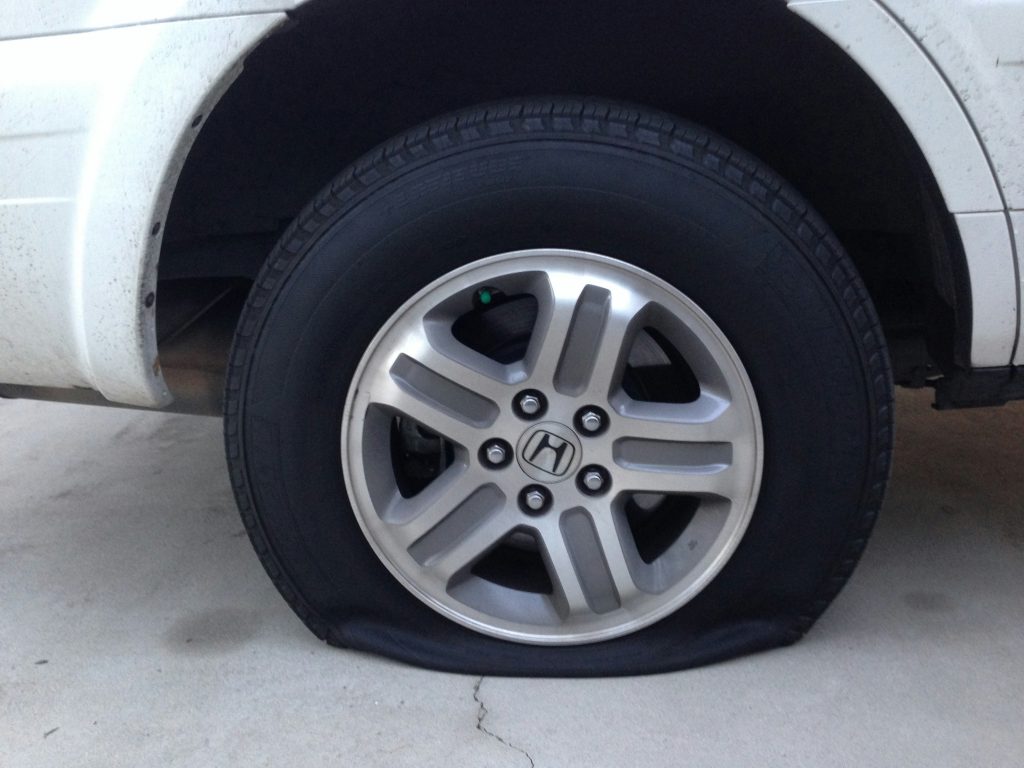
Drivers across the UK run into some kind of tyre trouble every 90 seconds – that’s 41 flat tyres, blowouts, or punctures every hour.
Around 360,000 people were faced with a flat tyre last year, but do you know what to do if it happens to you? According to research by Green Flag, around 40% of drivers said they would have a go at fixing a flat tyre themselves.
If you’re someone who likes rolling their sleeves up but wouldn’t know where to start, we’re here with a guide on how to change a tyre.
What to do if you get a flat tyre
- If you think you’ve got a flat tyre, slow down and find a safe place to stop off the road. If you’re on the motorway, don’t try to change a tyre yourself, even if you’re on the hard shoulder or in an emergency area.
- Put on a high-visibility vest (if you have one) and place a reflective hazard warning triangle around 45 metres behind your car to alert oncoming traffic.
- Find the spare wheel, jack, wheel brace and locking wheel nut key. They should be under the boot floor, under the car or on the back door.
- If you can’t find a spare wheel, your car might have a can of mousse that you can squirt into the tyre through the valve. This is only a temporary solution to get you home, and you should get the tyre changed as soon as possible.
- To remove the punctured wheel and tyre, loosen the wheel nuts with the wheel wrench, but don’t remove them yet. If you can’t see the wheel nuts, you may have to prise off a cover first. If your car has alloy wheels, one of the nuts is likely to be locking. There will be a key that will fit into the wheel brace to undo it.
- Check the handbrake is firmly on and put the car into first gear for manual and park for automatic. Find the jacking point by looking in your car’s manual and use the jack to raise the car so that the wheel with the punctured tyre is off the ground.
- Remove the wheel nuts and take the wheel off. If the wheel won’t budge, call Green Flag or your breakdown provider – pushing and pulling it could bring the car off the jack.
- Lift the spare wheel onto the hub, line up the holes and screw in the nuts until they’re tight.
- When the wheel’s secure, lower the jack and use the wrench to tighten the wheel nuts fully.
- Check all the nuts twice to make sure none are loose.
Keep an eye on your tyres
If all that sounds too much like hard work, there are some things you can do to help prevent a flat trye happening in the first place.
Our research showed that nearly two-thirds of drivers regularly check the condition and pressure of their tyres.
That’s a good place to start – here are some other things you can do to keep your tyres in good working order:
Check the tread depth – Your tread depth is crucial for safety, especially when you’re driving in difficult weather conditions. The legal minimum tread depth is 1.6mm, which is about the width of four credit cards stacked on top of each other. If your tyre tread is below the minimum, get it replaced immediately.
Wear and tear – Check your tyres for signs of damage, like bulges or cuts, and remove any items lodged in them. If you spot any problems, get them checked out by a professional.
Keep them clean – Keep your tyres clean so you can easily spot any signs of wear and tear. Making sure your tyres are free of dirt, grease or debris will help make sure they perform as they should.
Maintain the valves – Make sure all your tyre valves have caps and check for any air leaks. This can help extend the life and maintain the performance of your tyres.
Katie Lomas, Managing Director of Green Flag, has one other piece of advice: “While it is good news that drivers are checking their main tyres for pressure and any wear and tear, we encourage them to take just as much caution when it comes to their spare tyres. This will help them avoid being caught out if they find themselves at the roadside with a flat or blown-out tyre.
“And while calling upon a family member or taking a DIY approach to fixing a flat tyre can be good, nothing beats the peace of mind that comes by having your tyre replaced safely and securely by a breakdown provider or an expert.”
Remember, if you get in to trouble on the roads this winter, Green Flag is here to help.